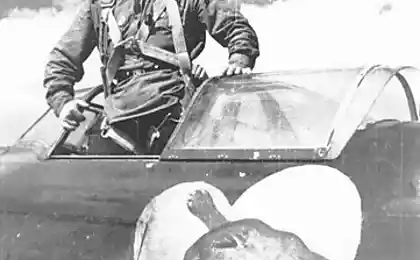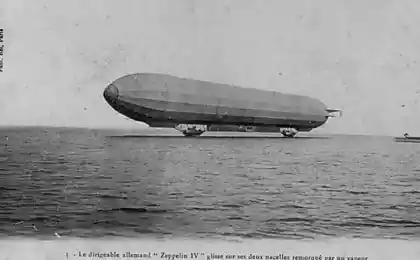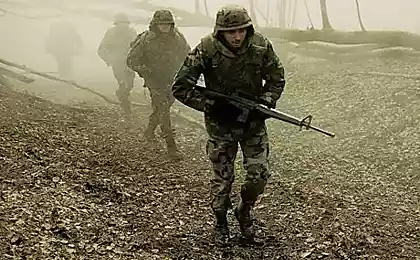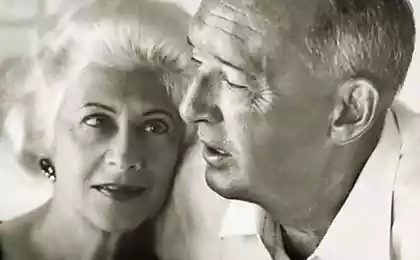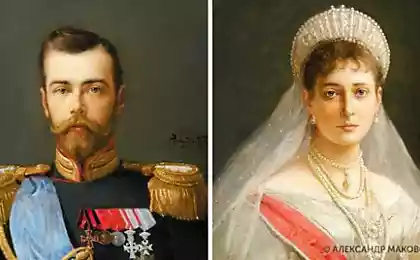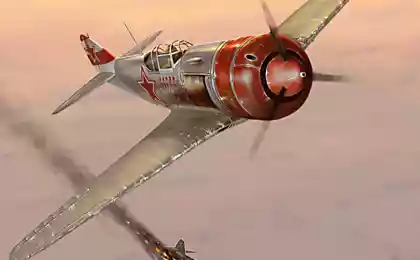1243
My air armada.
Today I want to introduce you to my collection of model airplanes (must be the same even as it diluted Jap from Maidan and Olympics!).
Frankly. I rukozhop noble, and for the life he has collected only three models, but it does not bother me the best model to buy, and then another publishing house published the magazine, where each room was a model. And I started buying. My wife did not approve, for every magazine worth 300 rubles, and I do not approve of that month comes just two rooms. Anyway, I bought them until they disappeared from the shelves.
Will be 53 photos.
Yak-11
Yak-11 (NATO - Moose) - Soviet fighter trainer.
Used socialist countries from 1947 to 1962. The aircraft in its class, has set a number of world records for speed. (Photo)

ANT-25
Developed in 1932 at TsAGI brigade Sukhoi led AN Tupoleva.Na this plane there were several record flights. In September 1934 - a record for distance and duration flight on the circular route - 12411 km for 75 hours (crew commander - MM Gromov). In July 1936 at the ANT-25 was committed by the first non-stop flight from Moscow to the Far East a length of 9375 km (crew commander - VP Chkalov).
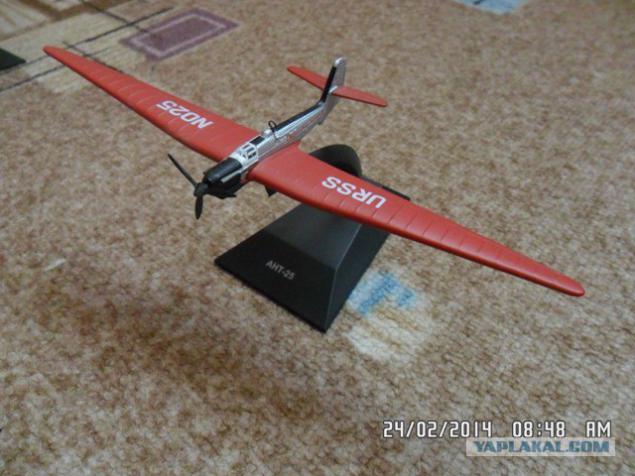
Su-15
Su-15 (NATO: Flagon) - Soviet fighter-interceptor, developed in the early 1960s. For a long time it formed the basis of the air defense of the USSR and participated in numerous incidents of flights of foreign planes over Soviet territory.
The most famous such incident involving the Su-15 took place in 1983, when the Su-15 piloted by Gennady Osipovich, shot down a South Korean passenger plane Boeing 747. Also, the Su-15 flight broke a South Korean passenger plane Boeing 707 over the Kola Peninsula in 1978. (Photo )

Tu-128
Tu-128 (NATO: Fiddler - «Fiddler (street)") - Soviet double loitering interceptor long range. (Photo)
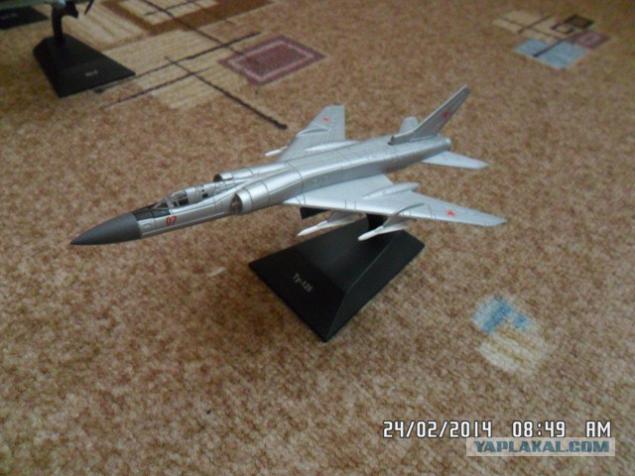
IL-10
Il-10 (NATO: Beast - «The Beast") - a Soviet attack the final period of World War II design Ilyushin Design Bureau, established in 1944 by a deep modernization of the IL-2. The first flight took place on April 18th, 1944, test pilot VK Kokkinaki.
Serial production of IL-10 was organized in three aircraft plants: № 1, № 18 and № 64 and lasted five years. In 1945, it was released in 2556 machines of this type. In all there were 4475 combat IL-10 and 280 of training Wil-10.
From 1951 to the end of December 1955 the IL-10 produced under license at the "Air" in Sokovitse (Czechoslovakia) under the name B-33. In 1953-54 the Czech attack aircraft were delivered to Poland, Hungary, Romania and Bulgaria. B-33 was armed with four cannons NS-23RM with ammunition 150 rounds per gun. Total built in Czechoslovakia in 1200 B-33 aircraft. (photo)
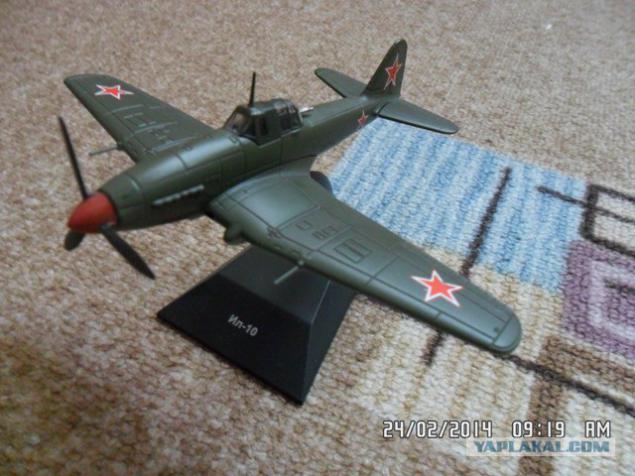
IL-28
Il-28 (NATO: Beagle (eng. "The Hound")) - the first Soviet jet bomber, the support of tactical nuclear weapons [1].
In the mid-1950s was the main striking force of tactical aviation of the USSR and the Warsaw Pact. Notable for outstanding reliability and easy maintenance. He participated in numerous local conflicts.
For the creation of the Il-28 Ilyushin Design Bureau and the group of designers was awarded the Stalin Prize. (Photo)

I-153
I-153 "Chaika" - Soviet fighter piston 30s - 40s. (Photo)
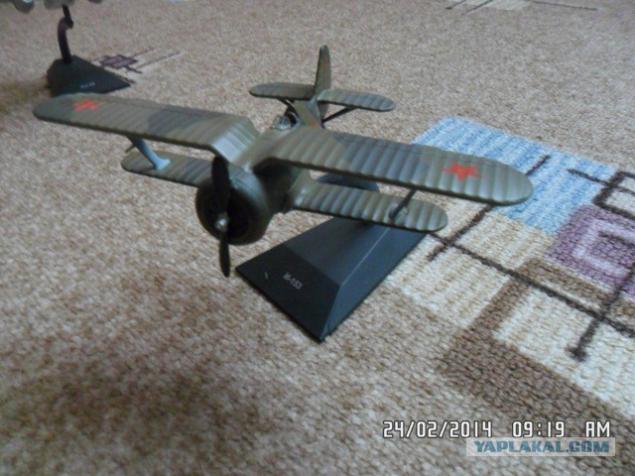
ANT-5
I-4 (ANT-5) - a Soviet single-seat fighter. Designed in 1927 for the purpose of comparison, all-metal construction with mixed and wooden structures fighters. He became the first aircraft designed by Pavel Sukhoi, which was built in series. (Photo)
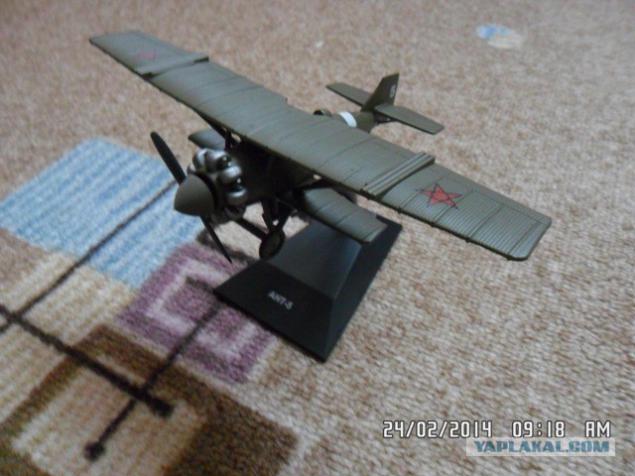
MiG-29
MiG-29 (9-12 product on NATO codification: Fulcrum - the fulcrum) - Soviet multipurpose fighter fourth generation [4], developed in OKB MiG. (Photo)
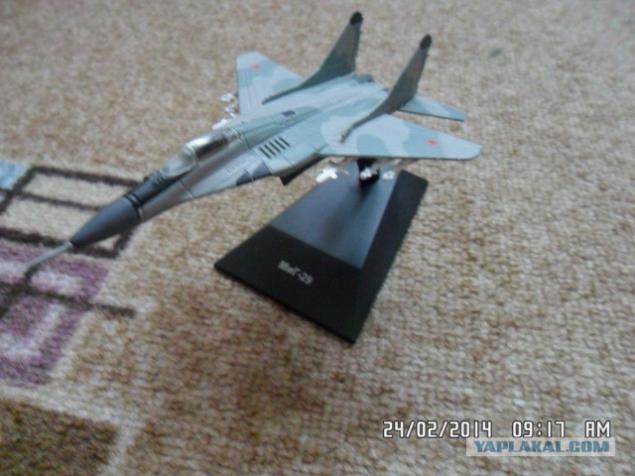
Su-25
Su-25 (the product "T-8", NATO reporting: Frogfoot) - Soviet / Russian armored subsonic attack aircraft designed for close support of ground forces on the battlefield, day and night with the line of sight goals, as well as the destruction of objects with the specified coordinates clock in any weather. The Russian army was nicknamed "Grach».
Su-25 first flew on 22 February 1975. Planes of this type in operation since 1981, participated in numerous military conflicts and remain in the ranks of the Russian Air Force until at least 2020. October 8, 2009 The Ministry of Defence of the Russian Federation announced the resumption of purchases of this type of attack aircraft for the Russian Air Force. (Photo)
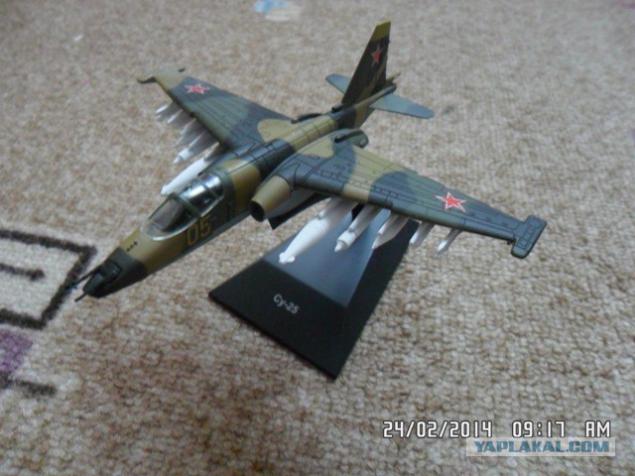
ZM
3M (NATO: Bison-B) - Soviet strategic bomber design myasishchev. (Photo)
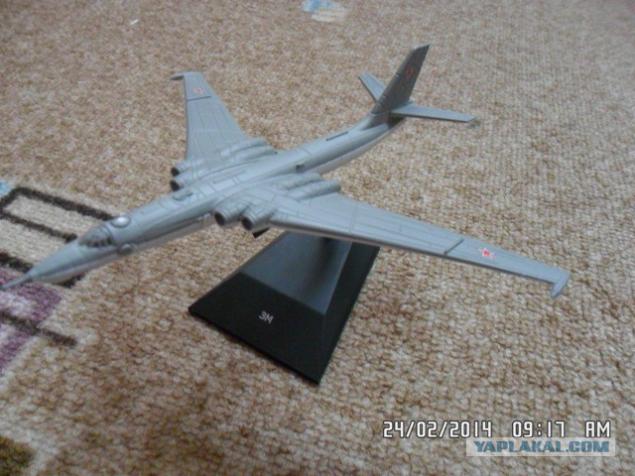
and 1
I-1 (the first fighter) (prototype IL-400 and IL-400b) - the first Soviet fighter developed by Nikolai Nikolaevich Polikarpov under the engine "Liberty" with a capacity of 400 hp (hence the IL-400) Despite the fact that the fighter was put into production (released 33 copies), it was not accepted for service. (photo)
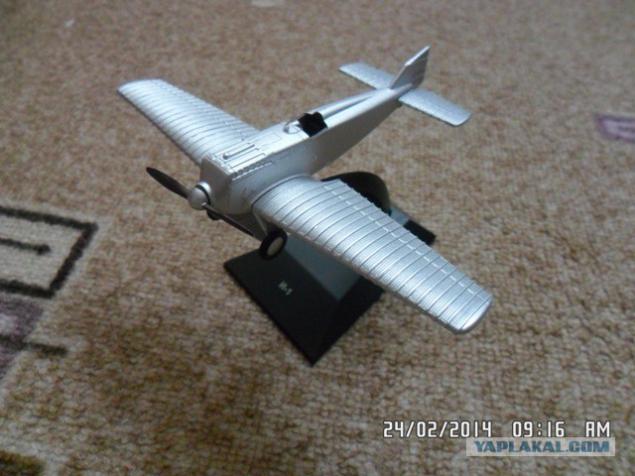
AN-12
An-12 (product of "T", NATO reporting: Cub - «Member") - Soviet military transport aircraft. It developed in the ASTC. Antonov. (Photo)
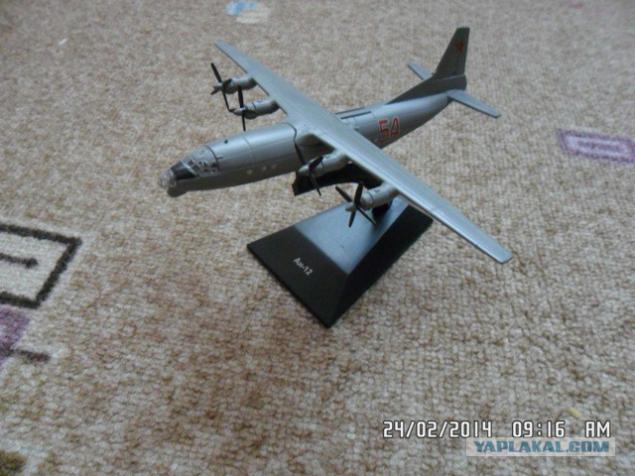
Yak 12
Yak-12 (NATO: Creek) - light multipurpose transport aircraft. KB was developed by Alexander Sergeyevich Yakovlev. In 1946 new aircraft has passed the test. Almost immediately began mass production. The basic version of the Yak-12 has good for its class machines flight data. The aircraft was equipped with a radio and devices, providing the ability to fly at night and in adverse weather conditions, length of the runway 120 m run - 150 m. The modified Yak-12M produced in Poland under the designation of PZL-101 Gawron. A large number of these aircraft remain in use to this day, many of them transferred to summer school or be used in civil aviation. (photo)
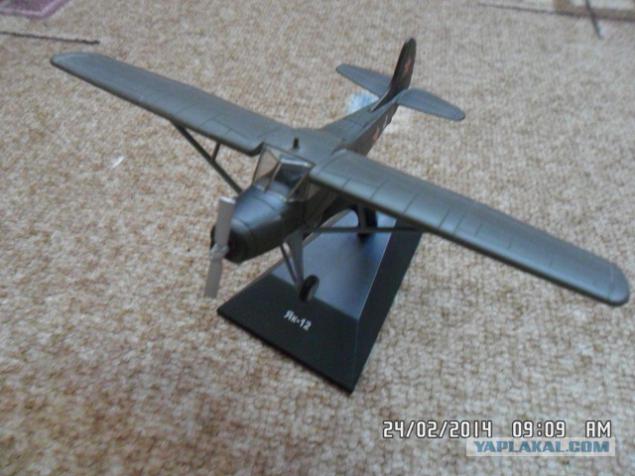
BI-1
BI (BI - Bereznyak - Isaev, or the Middle Fighter, also known as "B-1") - a rocket plane, the first Soviet aircraft with liquid rocket engine. Low-wing monoplane, the starting weight of 1, 5 m in the reserve fuel (nitric acid and kerosene) 500 kg. Wingspan 7, 5 m. (Photo)
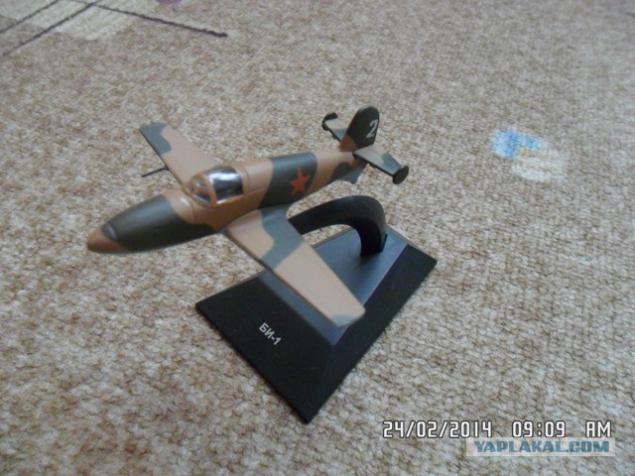
IL-2 KCC
IL-2 CMP (wing with the "Arrow") - Continuous modification of the Il-2 AM-38F with the same engine AM-38F, but uprated to 1,720 liters. p., with some structural and aerodynamic improvements. (Photo)

AN-26
An-26 (NATO: Curl - «Whirlwind") - Soviet military transport aircraft designed to Antonov. It is a modification of the original model of the An-24. Due to the large width of the cargo hatch openings (2, 4 m) and install a special ramp-loading flap can be comfortable with both the land and from the body of the car, which is much faster and easier handling. An-26 is equipped with two turboprop engines AI-24W and one additional reactive RU-19A-300, installed in the right-hand main engine nacelle. In China, it designed and manufactured Y-14, based at the An-26. (Photo)
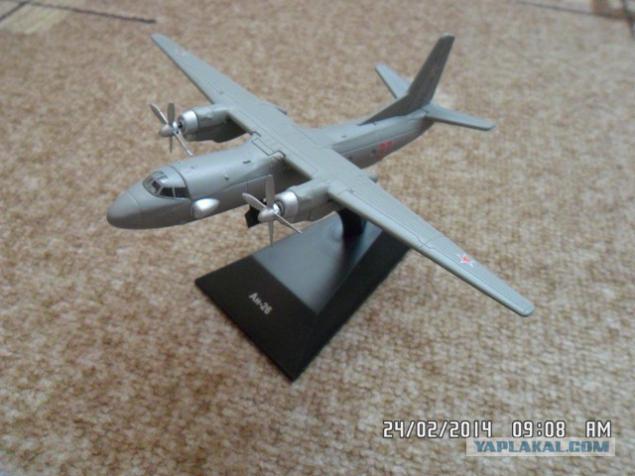
I-16
I-16 (CKB-12), (nickname: Ass, ishachok, rata (App. Rat), mosca (App. Fly) (among the Spanish Republican)) - Soviet single-engine piston fighter monoplane 30s, created in OKB Polikarpov. The world's first high-speed serial nizkoplan with retractable landing gear. (Photo)
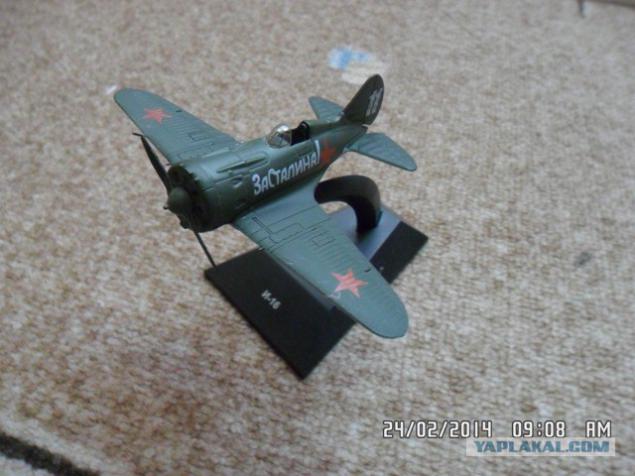
UT-2
UT-2 - Soviet trainer aircraft of the prewar and war periods.
UT-2 with engine M-11 is a single-engine scheme seater monoplane with a tractor propeller, low-mounted cantilever wing, open cockpit instructor and student, arranged in tandem, and non-retractable landing gear in flight. In winter gear changing on wooden skis.
Designer - Alexander Yakovlev. The prototype was a UT-2 AIR-10. Mass produced in the years 1938-1948. Total production in 7323 pieces.
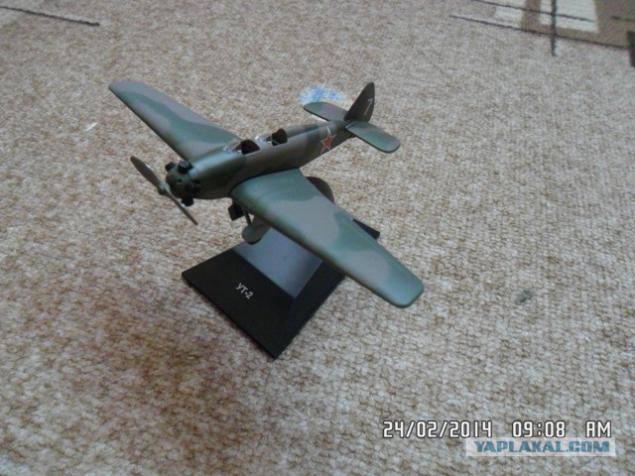
and 5
I-5 - Soviet fighter biplane, which became the main type of fighter aircraft in the Soviet Air Force since its commissioning in 1933 and until 1936. There were built 803 cars (including prototypes).
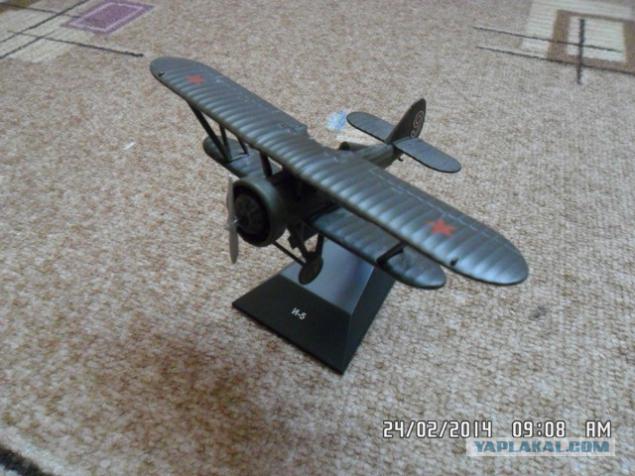
DB-3
DB-3 (CDB-30) - long-range bomber, developed in OKB-39 under the direction of SV Ilyushin. The first blows in Berlin on the night of August 8, 1941 the crew performed a special group, formed on the basis of the 1st mtap Air Baltic Fleet in the refitted aircraft DB-3T. Three groups of 15 cars lifted off the island Ezel (Saaremaa) and successfully accomplish the combat mission.
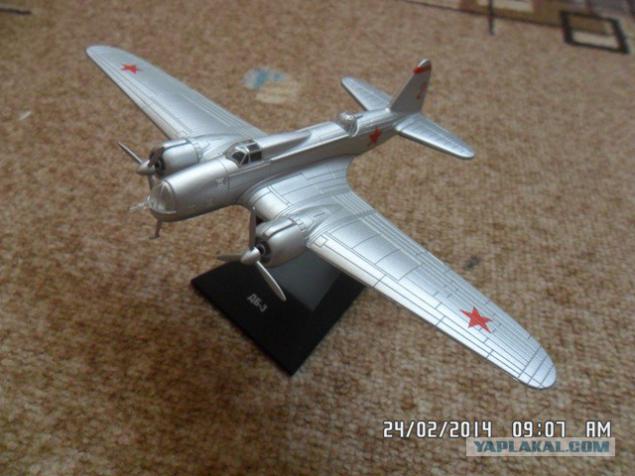
sous-7
Su-7 (product "C2", NATO reporting: Fitter) - Soviet fighter-bomber developed in the 1950s OKB. Dry.
There were produced in 1847 the Su-7 all modifications, of which 691 aircraft was exported to 9 countries.

sous-2
Su-2 (BB-1) - a Soviet bomber of the Great Patriotic War Sukhoi design. From other Soviet aircraft of this class feature advanced manufacturing technology and good visibility from the cab. The latter feature has allowed to successfully use this machine as artkorrektirovschika in the second half of World War II.
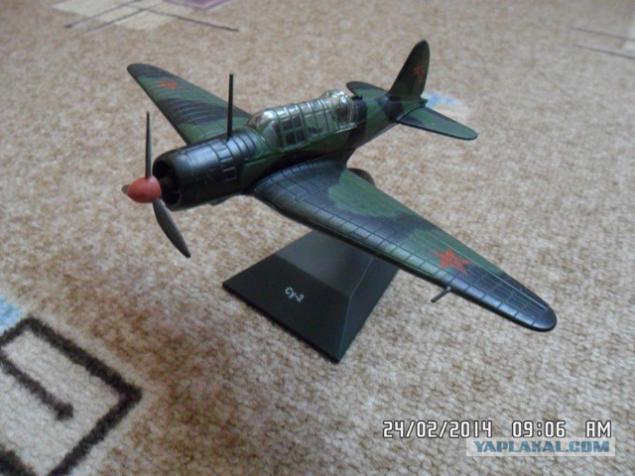
Yak-15
Yak-15 (NATO - Feather, Original Type 2) - the first jet fighter, the Air Force adopted the USSR. Designed based on the Yak-3, made its first flight April 24, 1946. In 1946-1947, 280 aircraft built.
The Soviet Air Force Yak-15 was regarded as a transitional aircraft, and only used for retraining flight crews from piston to jet fighters.
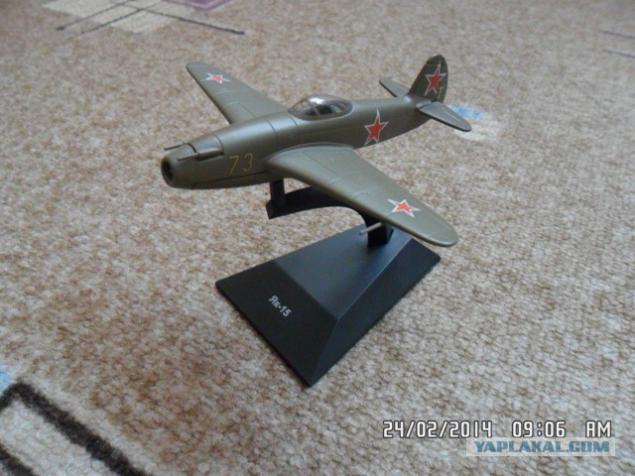
Su-17 M4
Su-17M4 (product "C54», Fitter-K) - final production version. Significantly changed the composition of avionics, non-regulated air intake is done, set the characteristic additional air intake at the bottom of the keel. First flight - 19 June 1980.
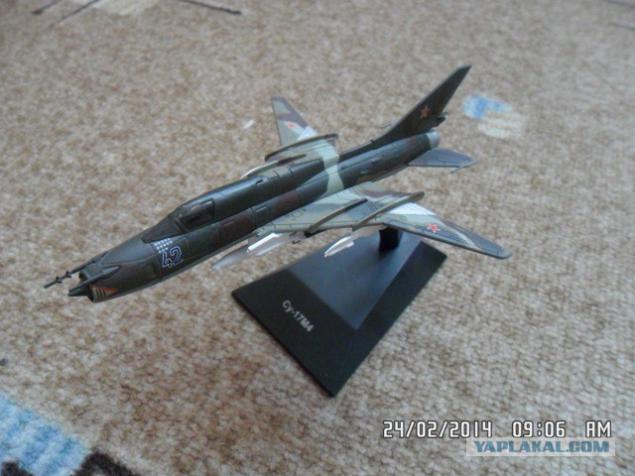
Su-27
Su-27 (internal designation: product 10B, NATO reporting: Flanker) - Soviet / Russian multipurpose all-weather fighter vysokomanёvrenny fourth generation, developed by the Sukhoi Design Bureau and is designed for air superiority.
Chief designer of the Su-27 at various times Naum Semenovich Chernyakov, Mikhail Simonov, AA and A. Kolchin Knyshev.
The first flight of the prototype took place in 1977, and in 1982 the aircraft began arriving in aircraft parts. At the moment, one of the main Russian Air Force aircraft, its modifications in service in the CIS countries, India, China and other countries.
On the basis of the Su-27, developed a large number of modifications: combat training of the Su-27UB, carrier-based fighter Su-33 and its training and combat modification of the Su-33UB, multi-purpose fighter Su-30, Su-27M, Su-35, Su-bomber 34 and others.

MiG-23
MiG-23 (product of 23-11, NATO reporting: Flogger - Eng. Bichevatel) - Soviet multipurpose fighter with variable sweep wing. Experienced aircraft with variable sweep wing "23-11" made its first flight 10 June 1967 under the control of the test pilot Fedotov AV

IL-4
IL-4 (NATO designation - Bob) - twin-engine long-range bomber of World War II, developed by OKB-240 under the direction of SV Ilyushin. Name of the IL-4 aircraft received in March 1942. However, DB-3 were produced about 6800 copies (including IL-4 - 5256). The most prominent achievement of these planes were bombing Berlin at the beginning of the war.
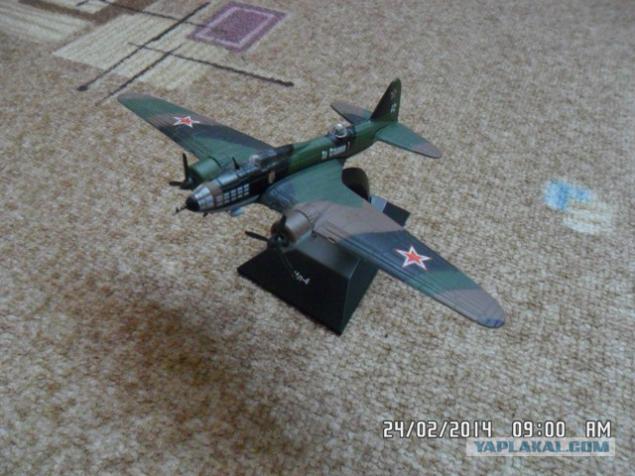
Tu-22M3
Tu-22M (product of "45", on the codification of NATO: Backfire) - long-range supersonic bomber bomber with variable geometry wings.
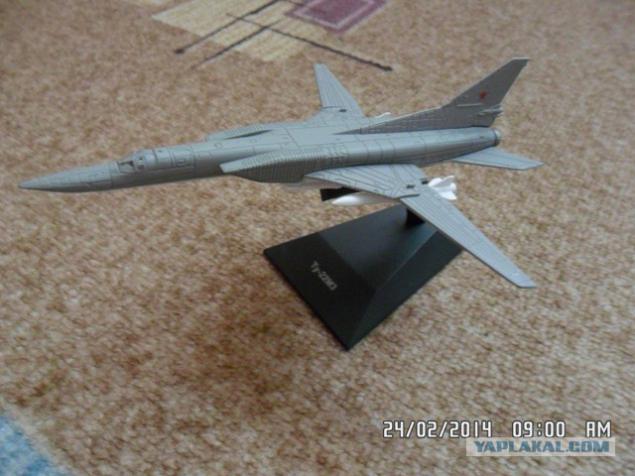
Tu-160
Tu-160 (factory designation: article 70, NATO reporting: Blackjack - Russian. Blackjack) - supersonic strategic bomber bomber with variable sweep wing, developed by Tupolev in the 1970s-1980s.
It should be in service in 1987. As a part of the Russian Air Force at the beginning of 2013 there are 16 Tu-160.
It is the largest and most powerful in the history of military aviation aircraft and supersonic aircraft with variable geometry wing, as well as the heaviest combat aircraft in the world, having the largest among bombers maximum take-off weight. Among the pilots he was given the nickname "White Swan».
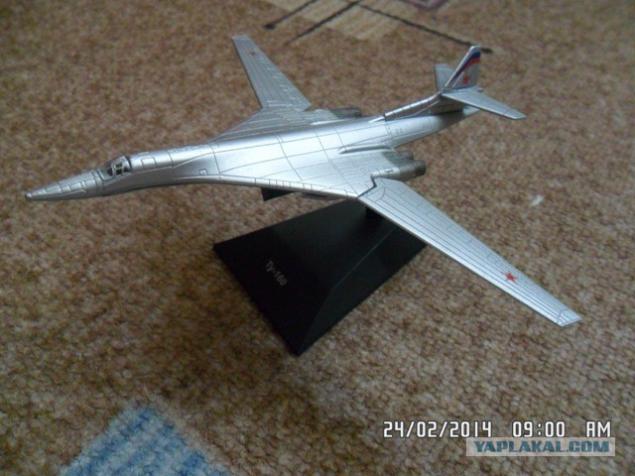
MiG-15
MiG-15 (product of C-310 aircraft and, on the codification of NATO: Fagot) - Soviet fighter developed by the Mikoyan and Gurevich Design Bureau in the late 1940s. Most mass-jet combat aircraft in aviation history, was in service in many countries.

Su-34
Su-34 (the product "T10V", NATO reporting: Fullback) - Soviet / Russian tactical fighter-bomber, as well positioned as a bomber.
Created on the basis of the Su-27. Applications include precision strikes, including nuclear weapons, on land and sea targets at any time.
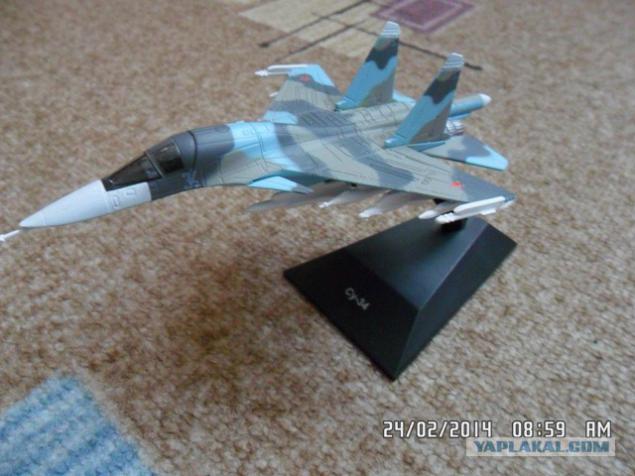
MiG-19
MiG-19 - (article 9-CM) Single Soviet jet fighter of the second generation, developed by the Mikoyan and Gurevich Design Bureau in the early 1950s. The first Soviet serial supersonic fighter, widely used in air defense system of the USSR and shipped abroad. Rovesnik American fighter F-100 Super Sabre, although resisted in Vietnam and later, the legendary F-4 Phantom II. On NATO codification: Farmer, Farmer - English. Farmer.
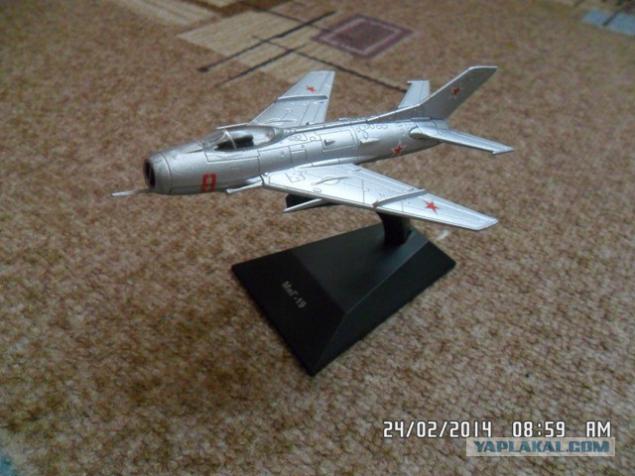
MiG-3
MiG-3 - Soviet high altitude fighter of World War II.
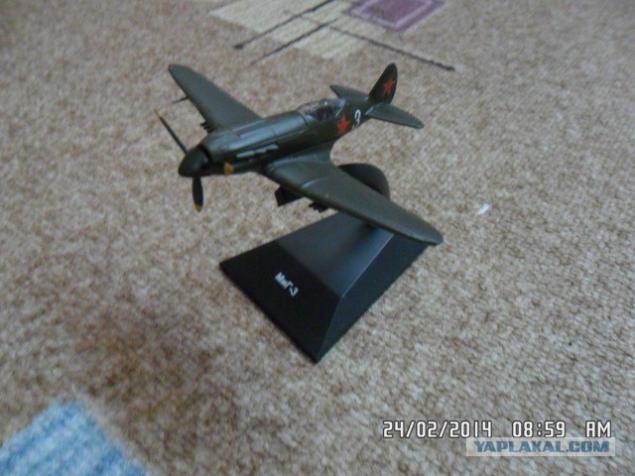
Li-2
Li-2 - Soviet military transport aircraft, whose production was launched in 1942 in Tashkent based on passenger aircraft PS-84 (1939), was created, in turn, based on the licensed production of the American Douglas DC-3.
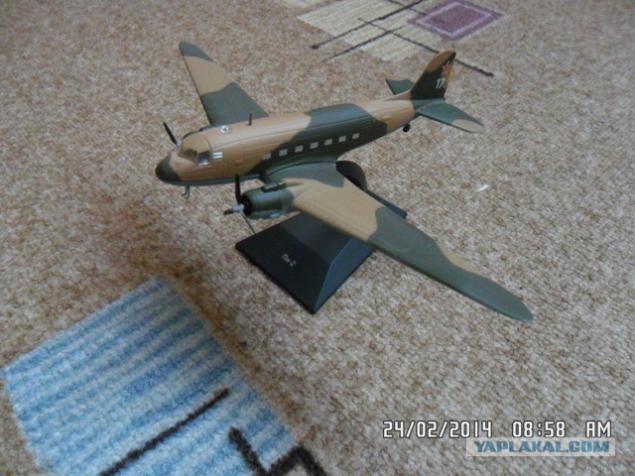
In 2
Po-2 (NATO: Mule - «mule") - a multipurpose biplane, created under the guidance of Polikarpov in 1928. It was one of the most popular aircraft in the world.

Yak-9
Yak-9 - Soviet single-engine fighter aircraft of World War II. KB was developed by Alexander Sergeyevich Yakovlev. He is the most popular Soviet fighter of World War II. Is produced from October 1942 to December 1948, only 16,769 were built airplanes.
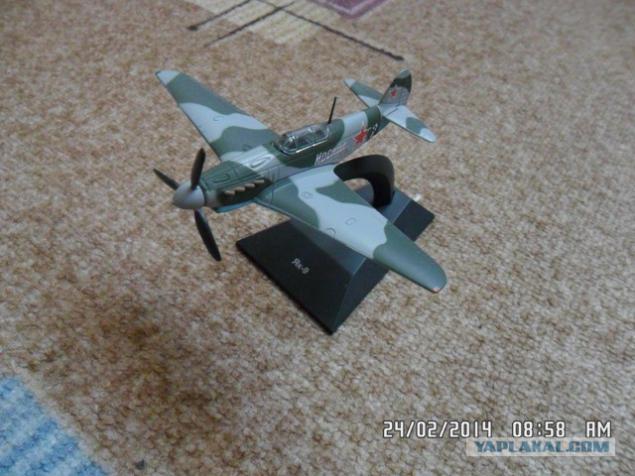
Mig9
MiG-9 (NATO classification: Fargo [1]; initially - Type 1) - the first Soviet turbojet fighter, took to the air. Developed in OKB Mikoyan and Gurevich, it made its first flight April 24 1946. In the years 1946-1948 built 602 aircraft
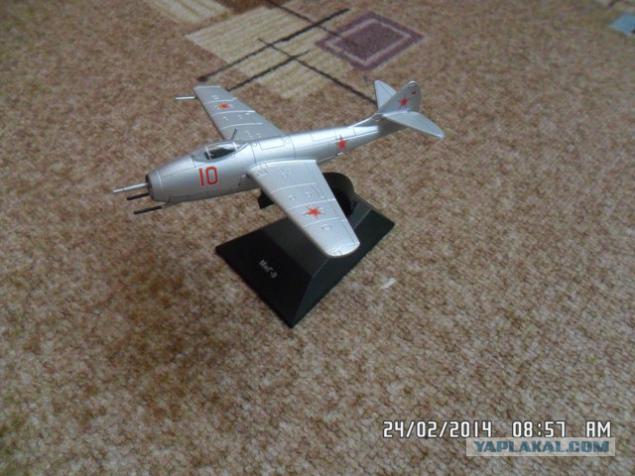
Su-9
Su-9 (NATO: Fishpot) - a Soviet single-engine all-weather fighter-interceptor. One of the first Soviet aircraft with a delta wing and the world's first fighter-interceptor, created as part of a single interception.

Yak-38
K-38 (internal designation: VM product, factory designation: article 86, NATO reporting: Forger-A, from the English. forger «smith") - Soviet carrier-based attack aircraft, the first Soviet serial VTOL. At its construction were used the data obtained during the development and testing of experimental aircraft Yak-36. The aircraft was equipped with a lifting and sustainer engine F-28 and two lift engines RD-38, located behind the cockpit. Also it was established a unique system of automatic ejection pilot in emergency situations (such as engine failure or jet control) at low speed and hover (more than any one aircraft of domestic aviation does not have the system fully automatic evacuation, decisive for the pilot).
Total built 231 aircraft Yak-38 of various modifications in 1974-1989, respectively. Serial production of the machine was carried out at the Saratov Aviation Plant. The aircraft was based on the aircraft carrier project 1143 ("Kiev", "Minsk", "Novorossiysk", "Baku»).
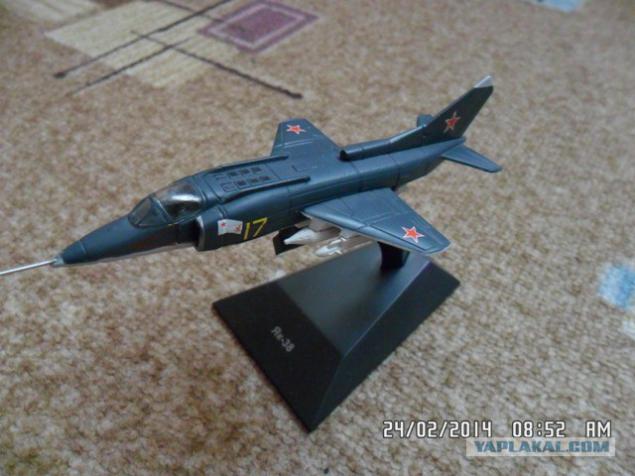
Air-1
AIR - the first family of aircraft of Alexander Yakovlev. Named in honor of the chairman of the CA Osoaviahima Alexei Ivanovich Rykov. During the 1927-1933 biennium. It was created 10 types of aircraft - from 1 to AIR-AIR-10.
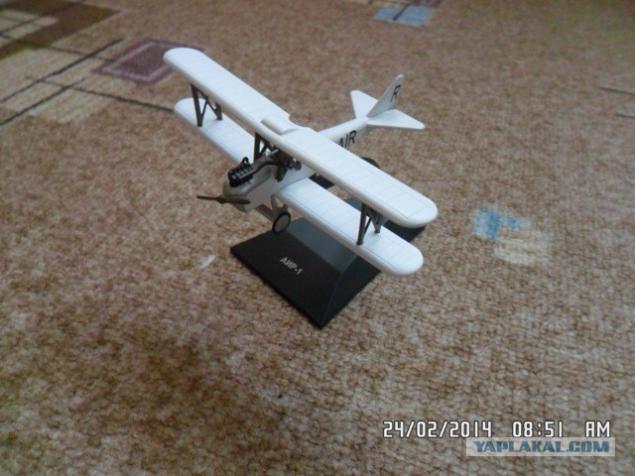
IL-2
IL-2 (NATO: Bark) - a Soviet attack aircraft of the Great Patriotic War, created in OKB-240 under the leadership of Sergei Vladimirovich Ilyushin. The most massive combat aircraft in history, was released more than 36 thousand pieces.
The Red Army aircraft was nicknamed "humpback" (with the characteristic shape of the fuselage). Designers call them developed aircraft "flying tank". German pilots for survival and lack of maneuverability called him there. Betonflugzeug - «concrete plane" and it. Zementbomber - «cement bomber." At the ground troops of the Wehrmacht aircraft enjoyed a bad reputation and has earned several honorary nicknames such as "the butcher" (it. Schlächter), «chopper» (Fleischwolf), «Iron Gustav» (Eiserner Gustav), as in Soviet literature, there are allegations that some Wehrmacht soldiers called him the "plague" (it. Schwarzer Tod, literally "black death»).
IL-2 was involved in battles in all theaters of World War II and in the Soviet-Japanese War. In February 1941 [5] has begun mass production (order AI Shakhurin number 739 of 12/14/1940).
Source:
Frankly. I rukozhop noble, and for the life he has collected only three models, but it does not bother me the best model to buy, and then another publishing house published the magazine, where each room was a model. And I started buying. My wife did not approve, for every magazine worth 300 rubles, and I do not approve of that month comes just two rooms. Anyway, I bought them until they disappeared from the shelves.
Will be 53 photos.
Yak-11
Yak-11 (NATO - Moose) - Soviet fighter trainer.
Used socialist countries from 1947 to 1962. The aircraft in its class, has set a number of world records for speed. (Photo)

ANT-25
Developed in 1932 at TsAGI brigade Sukhoi led AN Tupoleva.Na this plane there were several record flights. In September 1934 - a record for distance and duration flight on the circular route - 12411 km for 75 hours (crew commander - MM Gromov). In July 1936 at the ANT-25 was committed by the first non-stop flight from Moscow to the Far East a length of 9375 km (crew commander - VP Chkalov).

Su-15
Su-15 (NATO: Flagon) - Soviet fighter-interceptor, developed in the early 1960s. For a long time it formed the basis of the air defense of the USSR and participated in numerous incidents of flights of foreign planes over Soviet territory.
The most famous such incident involving the Su-15 took place in 1983, when the Su-15 piloted by Gennady Osipovich, shot down a South Korean passenger plane Boeing 747. Also, the Su-15 flight broke a South Korean passenger plane Boeing 707 over the Kola Peninsula in 1978. (Photo )

Tu-128
Tu-128 (NATO: Fiddler - «Fiddler (street)") - Soviet double loitering interceptor long range. (Photo)

IL-10
Il-10 (NATO: Beast - «The Beast") - a Soviet attack the final period of World War II design Ilyushin Design Bureau, established in 1944 by a deep modernization of the IL-2. The first flight took place on April 18th, 1944, test pilot VK Kokkinaki.
Serial production of IL-10 was organized in three aircraft plants: № 1, № 18 and № 64 and lasted five years. In 1945, it was released in 2556 machines of this type. In all there were 4475 combat IL-10 and 280 of training Wil-10.
From 1951 to the end of December 1955 the IL-10 produced under license at the "Air" in Sokovitse (Czechoslovakia) under the name B-33. In 1953-54 the Czech attack aircraft were delivered to Poland, Hungary, Romania and Bulgaria. B-33 was armed with four cannons NS-23RM with ammunition 150 rounds per gun. Total built in Czechoslovakia in 1200 B-33 aircraft. (photo)

IL-28
Il-28 (NATO: Beagle (eng. "The Hound")) - the first Soviet jet bomber, the support of tactical nuclear weapons [1].
In the mid-1950s was the main striking force of tactical aviation of the USSR and the Warsaw Pact. Notable for outstanding reliability and easy maintenance. He participated in numerous local conflicts.
For the creation of the Il-28 Ilyushin Design Bureau and the group of designers was awarded the Stalin Prize. (Photo)

I-153
I-153 "Chaika" - Soviet fighter piston 30s - 40s. (Photo)

ANT-5
I-4 (ANT-5) - a Soviet single-seat fighter. Designed in 1927 for the purpose of comparison, all-metal construction with mixed and wooden structures fighters. He became the first aircraft designed by Pavel Sukhoi, which was built in series. (Photo)

MiG-29
MiG-29 (9-12 product on NATO codification: Fulcrum - the fulcrum) - Soviet multipurpose fighter fourth generation [4], developed in OKB MiG. (Photo)

Su-25
Su-25 (the product "T-8", NATO reporting: Frogfoot) - Soviet / Russian armored subsonic attack aircraft designed for close support of ground forces on the battlefield, day and night with the line of sight goals, as well as the destruction of objects with the specified coordinates clock in any weather. The Russian army was nicknamed "Grach».
Su-25 first flew on 22 February 1975. Planes of this type in operation since 1981, participated in numerous military conflicts and remain in the ranks of the Russian Air Force until at least 2020. October 8, 2009 The Ministry of Defence of the Russian Federation announced the resumption of purchases of this type of attack aircraft for the Russian Air Force. (Photo)

ZM
3M (NATO: Bison-B) - Soviet strategic bomber design myasishchev. (Photo)

and 1
I-1 (the first fighter) (prototype IL-400 and IL-400b) - the first Soviet fighter developed by Nikolai Nikolaevich Polikarpov under the engine "Liberty" with a capacity of 400 hp (hence the IL-400) Despite the fact that the fighter was put into production (released 33 copies), it was not accepted for service. (photo)

AN-12
An-12 (product of "T", NATO reporting: Cub - «Member") - Soviet military transport aircraft. It developed in the ASTC. Antonov. (Photo)

Yak 12
Yak-12 (NATO: Creek) - light multipurpose transport aircraft. KB was developed by Alexander Sergeyevich Yakovlev. In 1946 new aircraft has passed the test. Almost immediately began mass production. The basic version of the Yak-12 has good for its class machines flight data. The aircraft was equipped with a radio and devices, providing the ability to fly at night and in adverse weather conditions, length of the runway 120 m run - 150 m. The modified Yak-12M produced in Poland under the designation of PZL-101 Gawron. A large number of these aircraft remain in use to this day, many of them transferred to summer school or be used in civil aviation. (photo)

BI-1
BI (BI - Bereznyak - Isaev, or the Middle Fighter, also known as "B-1") - a rocket plane, the first Soviet aircraft with liquid rocket engine. Low-wing monoplane, the starting weight of 1, 5 m in the reserve fuel (nitric acid and kerosene) 500 kg. Wingspan 7, 5 m. (Photo)

IL-2 KCC
IL-2 CMP (wing with the "Arrow") - Continuous modification of the Il-2 AM-38F with the same engine AM-38F, but uprated to 1,720 liters. p., with some structural and aerodynamic improvements. (Photo)

AN-26
An-26 (NATO: Curl - «Whirlwind") - Soviet military transport aircraft designed to Antonov. It is a modification of the original model of the An-24. Due to the large width of the cargo hatch openings (2, 4 m) and install a special ramp-loading flap can be comfortable with both the land and from the body of the car, which is much faster and easier handling. An-26 is equipped with two turboprop engines AI-24W and one additional reactive RU-19A-300, installed in the right-hand main engine nacelle. In China, it designed and manufactured Y-14, based at the An-26. (Photo)

I-16
I-16 (CKB-12), (nickname: Ass, ishachok, rata (App. Rat), mosca (App. Fly) (among the Spanish Republican)) - Soviet single-engine piston fighter monoplane 30s, created in OKB Polikarpov. The world's first high-speed serial nizkoplan with retractable landing gear. (Photo)

UT-2
UT-2 - Soviet trainer aircraft of the prewar and war periods.
UT-2 with engine M-11 is a single-engine scheme seater monoplane with a tractor propeller, low-mounted cantilever wing, open cockpit instructor and student, arranged in tandem, and non-retractable landing gear in flight. In winter gear changing on wooden skis.
Designer - Alexander Yakovlev. The prototype was a UT-2 AIR-10. Mass produced in the years 1938-1948. Total production in 7323 pieces.

and 5
I-5 - Soviet fighter biplane, which became the main type of fighter aircraft in the Soviet Air Force since its commissioning in 1933 and until 1936. There were built 803 cars (including prototypes).

DB-3
DB-3 (CDB-30) - long-range bomber, developed in OKB-39 under the direction of SV Ilyushin. The first blows in Berlin on the night of August 8, 1941 the crew performed a special group, formed on the basis of the 1st mtap Air Baltic Fleet in the refitted aircraft DB-3T. Three groups of 15 cars lifted off the island Ezel (Saaremaa) and successfully accomplish the combat mission.

sous-7
Su-7 (product "C2", NATO reporting: Fitter) - Soviet fighter-bomber developed in the 1950s OKB. Dry.
There were produced in 1847 the Su-7 all modifications, of which 691 aircraft was exported to 9 countries.

sous-2
Su-2 (BB-1) - a Soviet bomber of the Great Patriotic War Sukhoi design. From other Soviet aircraft of this class feature advanced manufacturing technology and good visibility from the cab. The latter feature has allowed to successfully use this machine as artkorrektirovschika in the second half of World War II.

Yak-15
Yak-15 (NATO - Feather, Original Type 2) - the first jet fighter, the Air Force adopted the USSR. Designed based on the Yak-3, made its first flight April 24, 1946. In 1946-1947, 280 aircraft built.
The Soviet Air Force Yak-15 was regarded as a transitional aircraft, and only used for retraining flight crews from piston to jet fighters.

Su-17 M4
Su-17M4 (product "C54», Fitter-K) - final production version. Significantly changed the composition of avionics, non-regulated air intake is done, set the characteristic additional air intake at the bottom of the keel. First flight - 19 June 1980.

Su-27
Su-27 (internal designation: product 10B, NATO reporting: Flanker) - Soviet / Russian multipurpose all-weather fighter vysokomanёvrenny fourth generation, developed by the Sukhoi Design Bureau and is designed for air superiority.
Chief designer of the Su-27 at various times Naum Semenovich Chernyakov, Mikhail Simonov, AA and A. Kolchin Knyshev.
The first flight of the prototype took place in 1977, and in 1982 the aircraft began arriving in aircraft parts. At the moment, one of the main Russian Air Force aircraft, its modifications in service in the CIS countries, India, China and other countries.
On the basis of the Su-27, developed a large number of modifications: combat training of the Su-27UB, carrier-based fighter Su-33 and its training and combat modification of the Su-33UB, multi-purpose fighter Su-30, Su-27M, Su-35, Su-bomber 34 and others.

MiG-23
MiG-23 (product of 23-11, NATO reporting: Flogger - Eng. Bichevatel) - Soviet multipurpose fighter with variable sweep wing. Experienced aircraft with variable sweep wing "23-11" made its first flight 10 June 1967 under the control of the test pilot Fedotov AV

IL-4
IL-4 (NATO designation - Bob) - twin-engine long-range bomber of World War II, developed by OKB-240 under the direction of SV Ilyushin. Name of the IL-4 aircraft received in March 1942. However, DB-3 were produced about 6800 copies (including IL-4 - 5256). The most prominent achievement of these planes were bombing Berlin at the beginning of the war.

Tu-22M3
Tu-22M (product of "45", on the codification of NATO: Backfire) - long-range supersonic bomber bomber with variable geometry wings.

Tu-160
Tu-160 (factory designation: article 70, NATO reporting: Blackjack - Russian. Blackjack) - supersonic strategic bomber bomber with variable sweep wing, developed by Tupolev in the 1970s-1980s.
It should be in service in 1987. As a part of the Russian Air Force at the beginning of 2013 there are 16 Tu-160.
It is the largest and most powerful in the history of military aviation aircraft and supersonic aircraft with variable geometry wing, as well as the heaviest combat aircraft in the world, having the largest among bombers maximum take-off weight. Among the pilots he was given the nickname "White Swan».

MiG-15
MiG-15 (product of C-310 aircraft and, on the codification of NATO: Fagot) - Soviet fighter developed by the Mikoyan and Gurevich Design Bureau in the late 1940s. Most mass-jet combat aircraft in aviation history, was in service in many countries.

Su-34
Su-34 (the product "T10V", NATO reporting: Fullback) - Soviet / Russian tactical fighter-bomber, as well positioned as a bomber.
Created on the basis of the Su-27. Applications include precision strikes, including nuclear weapons, on land and sea targets at any time.

MiG-19
MiG-19 - (article 9-CM) Single Soviet jet fighter of the second generation, developed by the Mikoyan and Gurevich Design Bureau in the early 1950s. The first Soviet serial supersonic fighter, widely used in air defense system of the USSR and shipped abroad. Rovesnik American fighter F-100 Super Sabre, although resisted in Vietnam and later, the legendary F-4 Phantom II. On NATO codification: Farmer, Farmer - English. Farmer.

MiG-3
MiG-3 - Soviet high altitude fighter of World War II.

Li-2
Li-2 - Soviet military transport aircraft, whose production was launched in 1942 in Tashkent based on passenger aircraft PS-84 (1939), was created, in turn, based on the licensed production of the American Douglas DC-3.

In 2
Po-2 (NATO: Mule - «mule") - a multipurpose biplane, created under the guidance of Polikarpov in 1928. It was one of the most popular aircraft in the world.

Yak-9
Yak-9 - Soviet single-engine fighter aircraft of World War II. KB was developed by Alexander Sergeyevich Yakovlev. He is the most popular Soviet fighter of World War II. Is produced from October 1942 to December 1948, only 16,769 were built airplanes.

Mig9
MiG-9 (NATO classification: Fargo [1]; initially - Type 1) - the first Soviet turbojet fighter, took to the air. Developed in OKB Mikoyan and Gurevich, it made its first flight April 24 1946. In the years 1946-1948 built 602 aircraft

Su-9
Su-9 (NATO: Fishpot) - a Soviet single-engine all-weather fighter-interceptor. One of the first Soviet aircraft with a delta wing and the world's first fighter-interceptor, created as part of a single interception.

Yak-38
K-38 (internal designation: VM product, factory designation: article 86, NATO reporting: Forger-A, from the English. forger «smith") - Soviet carrier-based attack aircraft, the first Soviet serial VTOL. At its construction were used the data obtained during the development and testing of experimental aircraft Yak-36. The aircraft was equipped with a lifting and sustainer engine F-28 and two lift engines RD-38, located behind the cockpit. Also it was established a unique system of automatic ejection pilot in emergency situations (such as engine failure or jet control) at low speed and hover (more than any one aircraft of domestic aviation does not have the system fully automatic evacuation, decisive for the pilot).
Total built 231 aircraft Yak-38 of various modifications in 1974-1989, respectively. Serial production of the machine was carried out at the Saratov Aviation Plant. The aircraft was based on the aircraft carrier project 1143 ("Kiev", "Minsk", "Novorossiysk", "Baku»).

Air-1
AIR - the first family of aircraft of Alexander Yakovlev. Named in honor of the chairman of the CA Osoaviahima Alexei Ivanovich Rykov. During the 1927-1933 biennium. It was created 10 types of aircraft - from 1 to AIR-AIR-10.

IL-2
IL-2 (NATO: Bark) - a Soviet attack aircraft of the Great Patriotic War, created in OKB-240 under the leadership of Sergei Vladimirovich Ilyushin. The most massive combat aircraft in history, was released more than 36 thousand pieces.
The Red Army aircraft was nicknamed "humpback" (with the characteristic shape of the fuselage). Designers call them developed aircraft "flying tank". German pilots for survival and lack of maneuverability called him there. Betonflugzeug - «concrete plane" and it. Zementbomber - «cement bomber." At the ground troops of the Wehrmacht aircraft enjoyed a bad reputation and has earned several honorary nicknames such as "the butcher" (it. Schlächter), «chopper» (Fleischwolf), «Iron Gustav» (Eiserner Gustav), as in Soviet literature, there are allegations that some Wehrmacht soldiers called him the "plague" (it. Schwarzer Tod, literally "black death»).
IL-2 was involved in battles in all theaters of World War II and in the Soviet-Japanese War. In February 1941 [5] has begun mass production (order AI Shakhurin number 739 of 12/14/1940).
Source:










